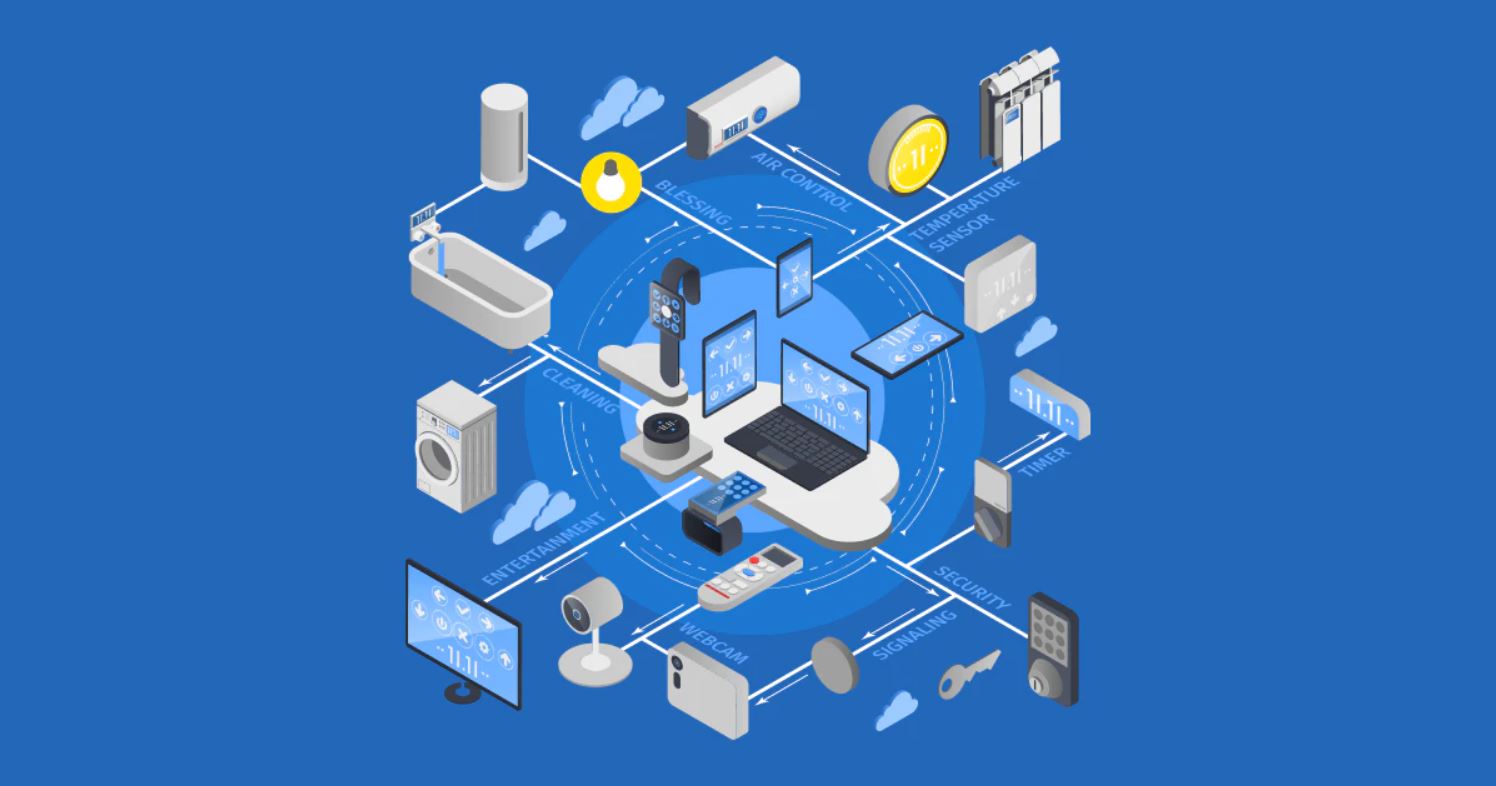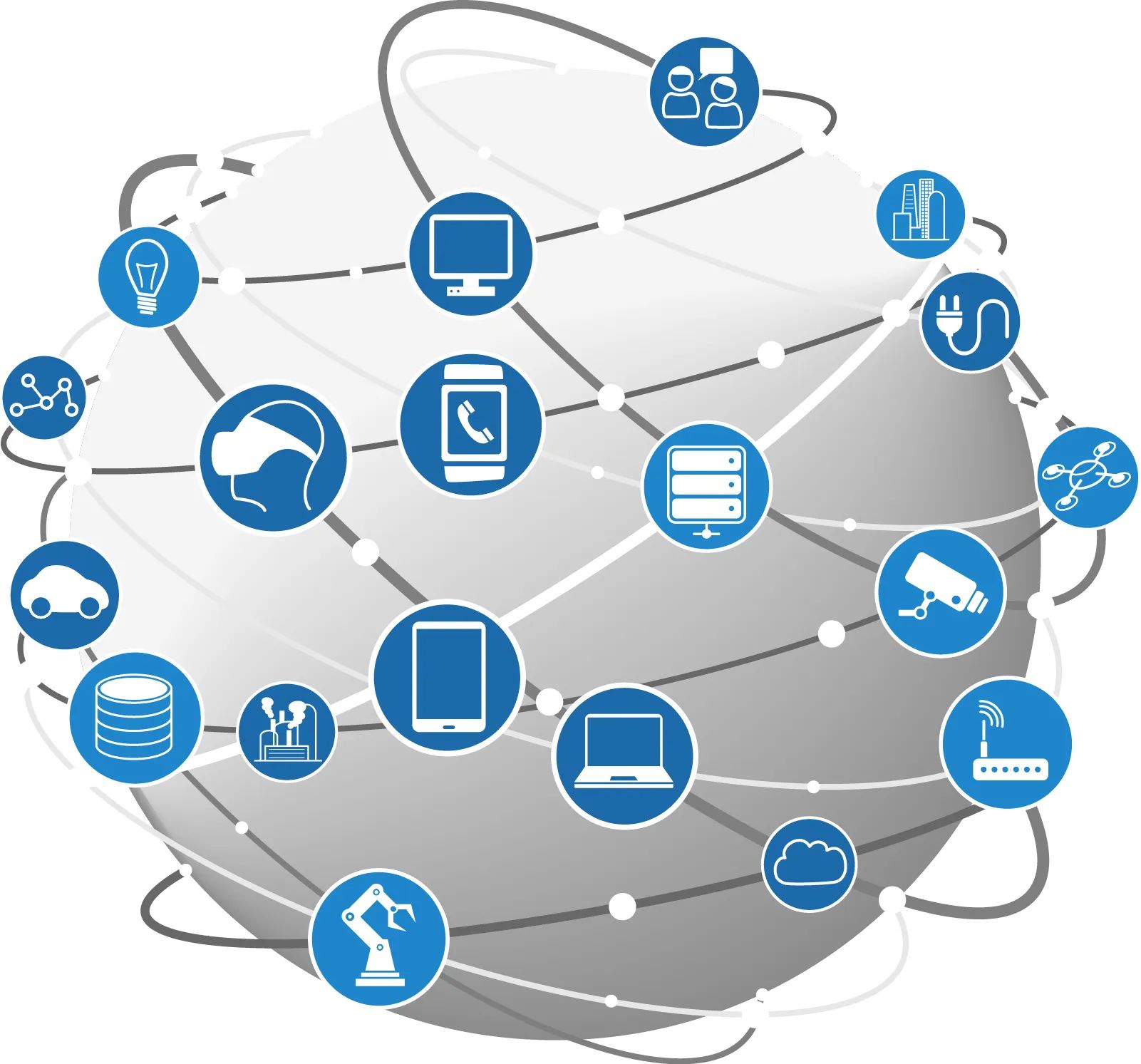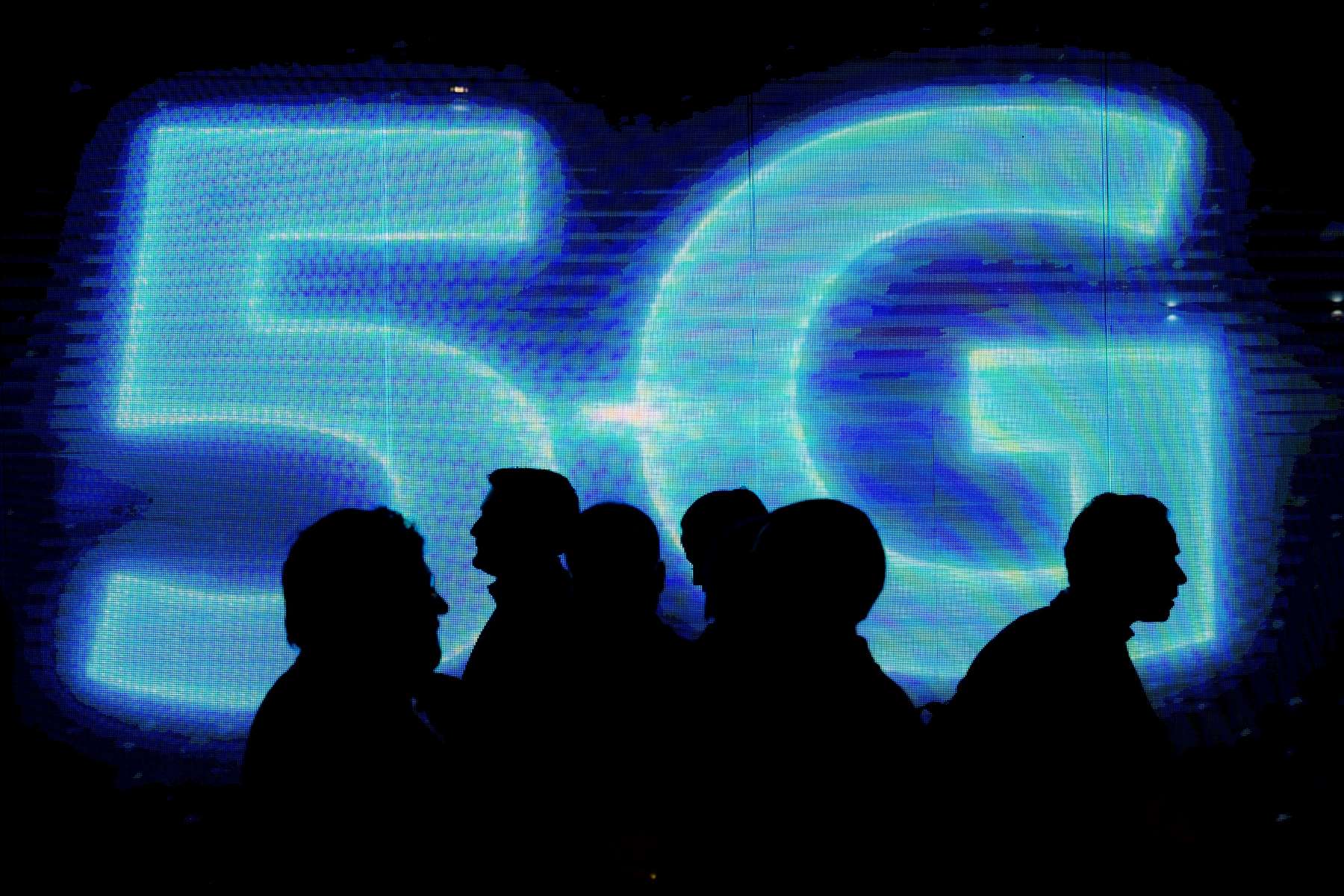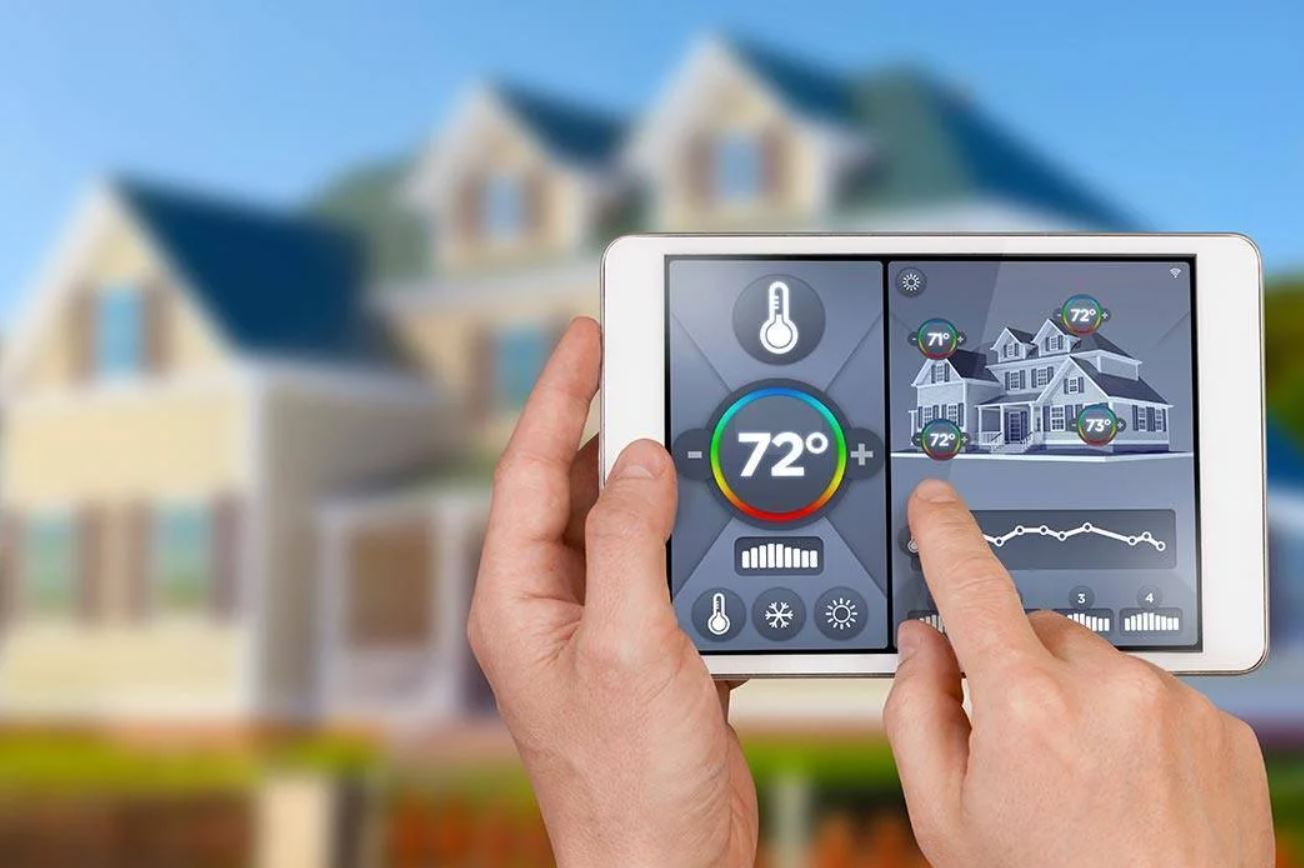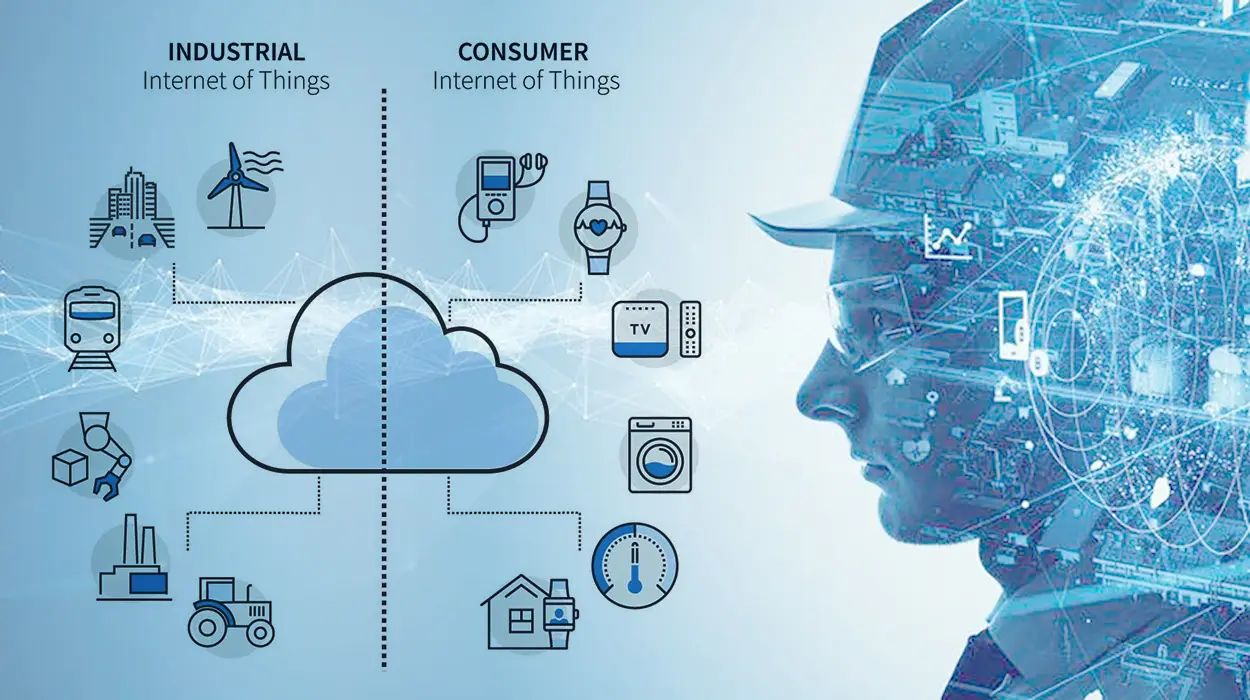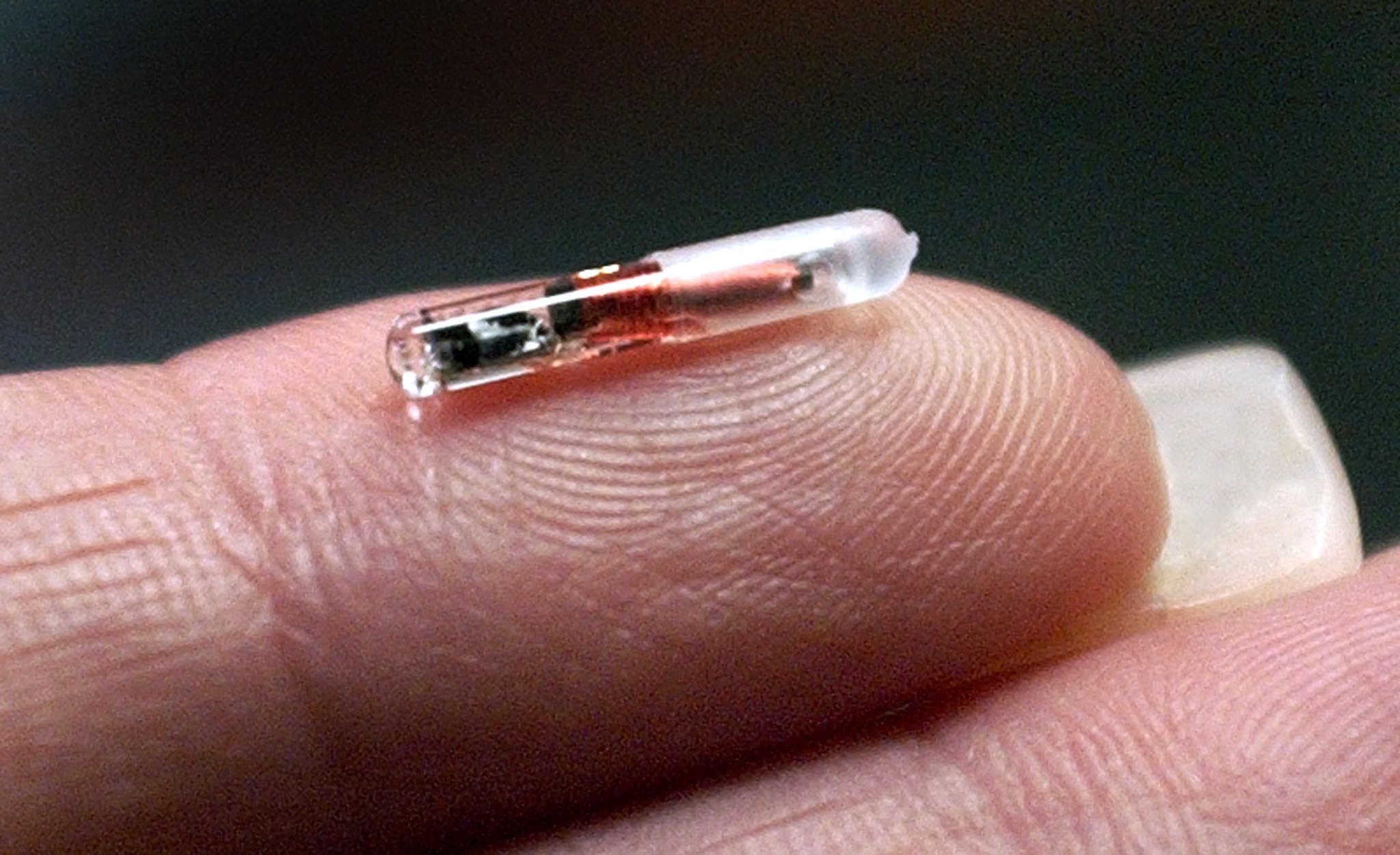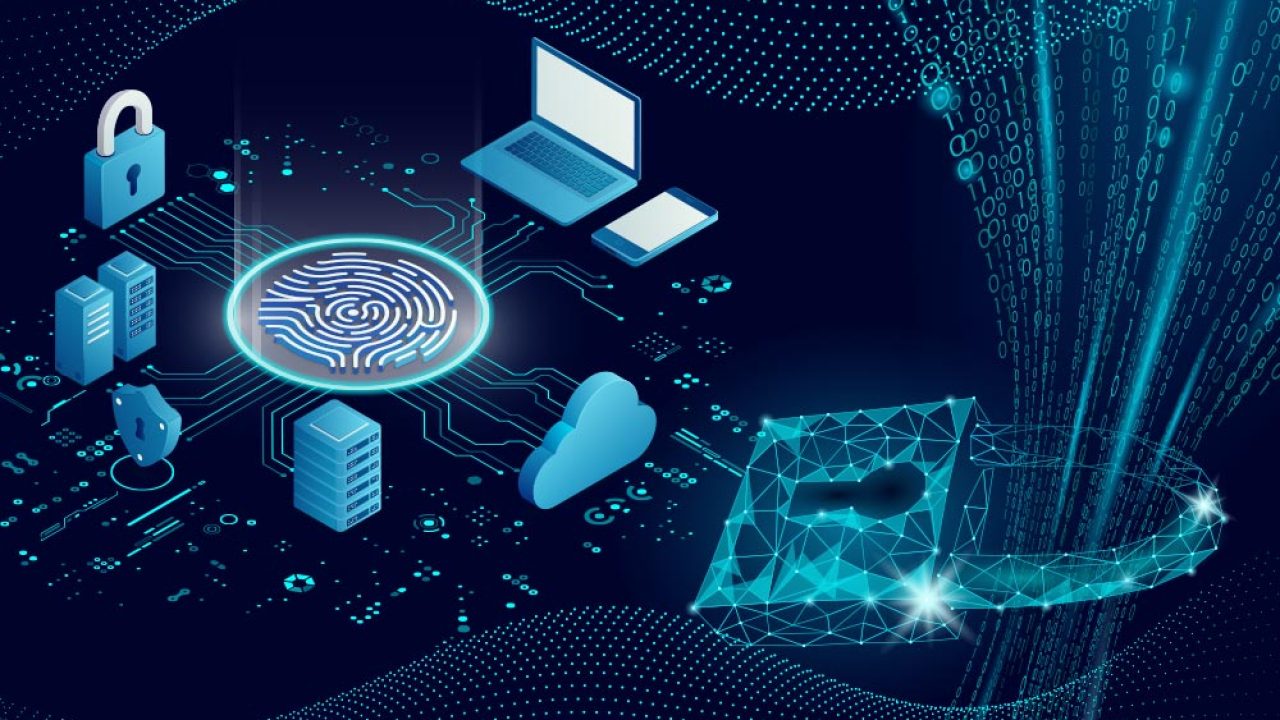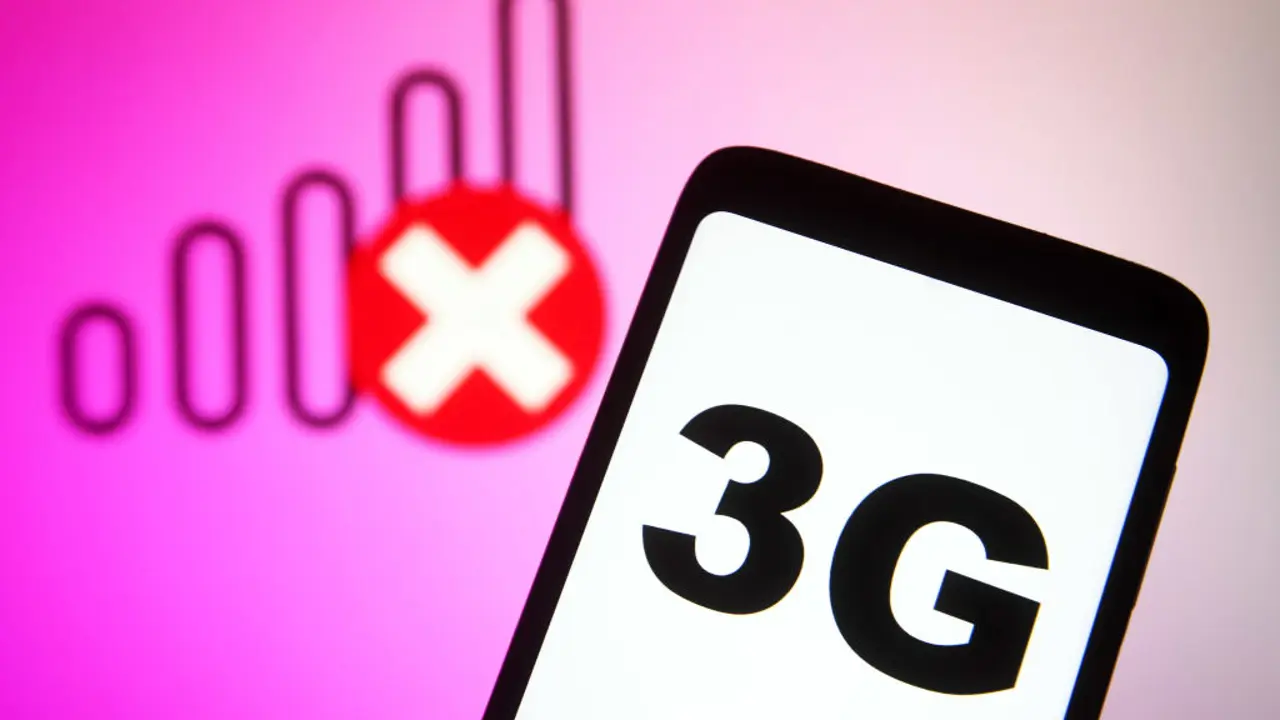Introduction
The rapid advancement of technology has brought about the rise of Internet of Things (IoT) devices, revolutionizing the way we interact with the world around us. These interconnected devices have enabled seamless communication and automation, enhancing convenience and efficiency in various aspects of our daily lives. From smart homes and wearable gadgets to industrial systems and healthcare solutions, IoT devices have become an integral part of the modern digital ecosystem.
However, along with the numerous benefits that IoT devices offer, there are also significant concerns and challenges that need to be addressed. Two major concerns regarding IoT devices are security and privacy. As the number of IoT devices continues to grow, it becomes crucial to recognize and mitigate the potential risks associated with their use.
In this article, we will delve into these concerns and explore the various vulnerabilities and consequences of inadequate security and privacy measures in IoT devices. By understanding these issues, we can take proactive steps to protect ourselves and ensure a safer and more secure IoT ecosystem.
Security Concerns
One of the major concerns regarding IoT devices is security. As these devices become more prevalent in our daily lives, they become attractive targets for cybercriminals who seek to exploit vulnerabilities in their systems. The interconnected nature of IoT devices makes them particularly susceptible to security breaches, as a compromise in one device can potentially compromise the entire network.
One of the primary security vulnerabilities in IoT devices is the lack of proper authentication and encryption mechanisms. Many IoT devices are manufactured with default or weak passwords, making them easy targets for hackers. In addition, inadequate encryption protocols leave data transmitted between devices vulnerable to interception and tampering.
Another significant security concern is the lack of regular software updates and patches for IoT devices. Manufacturers often neglect to provide timely updates, leaving devices exposed to known vulnerabilities. This creates a window of opportunity for hackers to exploit these weaknesses and gain unauthorized access to the devices.
Moreover, the diverse ecosystem of IoT devices introduces compatibility issues, making it difficult to implement coherent security measures across different devices and platforms. This lack of standardization leaves gaps in security, as different devices may have varying levels of security safeguards or may not be compatible with security protocols implemented by other devices.
The potential consequences of security breaches in IoT devices are severe. Hackers can gain unauthorized access to personal information, such as passwords, credit card details, and even personal surveillance footage. They can also infiltrate critical infrastructure systems, leading to disruptions in essential services such as energy grids, transportation systems, and healthcare facilities.
Privacy Concerns
In addition to security concerns, privacy is a significant worry when it comes to IoT devices. These devices collect vast amounts of data about user behavior, preferences, and even personal habits. The extensive collection of personal data raises concerns about how this information is stored, used, and shared.
One of the main privacy concerns with IoT devices is the potential for data breaches. If a hacker gains unauthorized access to an IoT device or its associated network, they can obtain sensitive personal information, which can be used for malicious purposes such as identity theft or blackmail. Additionally, the constant transmission of data from IoT devices to cloud storage or third-party platforms increases the risk of interception and unauthorized access.
Moreover, the lack of clear regulations and standards for data privacy in the realm of IoT devices further compounds these concerns. Many manufacturers collect an array of personal data without providing sufficient transparency or control over how that data is used or shared. This raises worries about the potential misuse of personal information by companies or third parties, as well as the lack of consent and control over the collection and storage of personal data.
Additionally, IoT devices that have cameras or microphones raise potential privacy issues. There is a risk of unauthorized recording or surveillance, especially if the devices are compromised or accessed without the user’s knowledge or consent. This intrusion into personal spaces can lead to a sense of discomfort and violation of privacy.
Furthermore, the aggregation and analysis of data from multiple IoT devices can create detailed profiles of individuals, revealing intimate and personal information. This data profiling poses concerns about the potential misuse of personal information and the erosion of privacy rights.
Overall, privacy concerns surrounding IoT devices highlight the need for greater transparency, control, and regulation of data collection, storage, and usage. It is essential for individuals to have clear knowledge and control over their personal data to mitigate the risks associated with IoT devices’ extensive data collection capabilities.
Security Vulnerabilities in IoT Devices
IoT devices are prone to several security vulnerabilities that make them attractive targets for hackers. Understanding these vulnerabilities is crucial in order to implement effective security measures and protect against potential attacks.
One of the main security vulnerabilities in IoT devices is the lack of proper authentication and authorization mechanisms. Many devices come with default or weak passwords that are easily guessed or bypassed. This leaves the devices vulnerable to unauthorized access, allowing hackers to take control of the device or gain access to the connected network.
Another vulnerability is the presence of outdated or unpatched software in IoT devices. Manufacturers often neglect to provide regular updates and patches, leaving known vulnerabilities unaddressed. Attackers can exploit these vulnerabilities to gain access to the device or compromise the connected network.
Furthermore, IoT devices are often manufactured with limited processing power and memory, making it challenging to implement robust security measures. This can result in weak encryption algorithms or inadequate encryption protocols, leaving data transmitted between devices vulnerable to interception and exploitation.
The presence of insecure communication protocols is another significant vulnerability in IoT devices. Many devices use protocols that do not prioritize security, making them susceptible to various forms of attacks, such as man-in-the-middle attacks or unauthorized access to communication channels.
Additionally, the lack of proper device management and monitoring mechanisms makes it difficult to detect and respond to security incidents. IoT devices are often dispersed across different locations and managed by different entities, increasing the challenge of maintaining consistent security measures and monitoring for potential threats.
The reliance on third-party software and services in IoT devices also introduces security vulnerabilities. If these third-party components are compromised, it can lead to vulnerabilities in the overall system, exposing devices and users to potential attacks.
Overall, the presence of these security vulnerabilities in IoT devices emphasizes the need for manufacturers and users to prioritize security measures, such as strong authentication, regular updates, robust encryption, and secure communication protocols. Additionally, implementing effective device management and monitoring strategies can help detect and mitigate security incidents in a timely manner, ensuring the integrity and security of IoT devices and networks.
Data Privacy and Collection
Data privacy and collection are significant concerns when it comes to IoT devices, as these devices collect massive amounts of personal data. Understanding how this data is collected, used, and shared is crucial in order to protect user privacy and ensure that personal information is handled responsibly.
One of the primary concerns with data collection in IoT devices is the lack of transparency and user consent. Many devices collect data automatically or without users’ explicit knowledge or consent. This raises concerns about individuals’ right to control their personal information and the potential for misuse or unauthorized sharing of data.
Furthermore, the vast amount of data collected by IoT devices raises questions about data retention and storage. Many manufacturers retain data for extended periods, which increases the risk of unauthorized access or data breaches. It is important for manufacturers to establish clear data retention policies and implement secure storage practices to protect users’ personal information.
The aggregation and analysis of data from multiple IoT devices also pose privacy risks. By combining data from various sources, detailed profiles of individuals can be created, revealing intimate information about their habits, preferences, and behaviors. This raises concerns about potential discrimination, targeting, or manipulation based on these profiles.
The sharing of data with third parties is another significant privacy concern. Many IoT devices transmit data to cloud storage or third-party platforms for analysis or storage purposes. The lack of transparency and control over how this data is shared, who has access to it, and for what purposes it is used raises concerns about the potential misuse or unauthorized access to personal information.
Additionally, the presence of cameras and microphones in IoT devices raises concerns about invasive surveillance and the violation of privacy. There have been instances of unauthorized recording or access to these devices, leading to a loss of personal privacy and a breach of trust.
To address these concerns, manufacturers and policymakers must prioritize user privacy by implementing clear and transparent data collection practices. Users should have control over their personal data, including the ability to provide informed consent, access their data, and opt out of data collection if desired. Furthermore, data encryption and secure transmission protocols should be implemented to protect data as it is transferred between devices and stored in the cloud.
Overall, data privacy and collection in IoT devices require a balance between innovation and protection of individual privacy rights. By prioritizing transparency, user control, and secure data handling practices, we can mitigate the risks and ensure that personal information remains private and protected in the IoT ecosystem.
Lack of Standards and Regulations
A significant challenge in the IoT landscape is the lack of standardized security measures and regulations. The rapid growth and proliferation of IoT devices have outpaced the development of comprehensive standards and regulations, leaving a void in ensuring consistent security practices and protecting user privacy.
One of the key issues with the lack of standards is the wide variety of IoT devices available in the market. Different manufacturers may prioritize different security measures or use varying protocols, making it difficult to establish a unified and cohesive security framework. This leaves gaps in security, as devices may have different levels of vulnerabilities or may not be compatible with security protocols implemented by other devices.
In addition, the absence of clear regulations creates challenges in holding manufacturers accountable for the security of their IoT devices. Without regulatory guidelines, manufacturers may prioritize functionality and cost-cutting over robust security measures, putting users at risk. There is a need for regulations that establish minimum security standards and require manufacturers to adhere to best practices in securing IoT devices.
Moreover, the lack of standardization also leads to challenges in managing updates and patches in IoT devices. With a diverse ecosystem of devices, it becomes challenging for manufacturers to provide timely updates and patches to address security vulnerabilities. This leaves devices exposed to known risks that could otherwise be mitigated through regular updates.
The absence of a standardized approach to privacy in IoT devices is another concern. With different devices collecting various types of personal data, there is no consistent framework for how this data should be handled, stored, or used. The lack of clear regulations in this area raises concerns about the potential misuse or unauthorized sharing of personal information collected by IoT devices.
To address these challenges, there is a need for the development of comprehensive standards and regulations that encompass security, privacy, and interoperability. These standards should establish minimum security requirements for IoT devices, encourage regular updates and patches, and promote secure communication protocols. Furthermore, regulations should address how personal data is collected, stored, and shared, ensuring user consent, transparency, and control.
By having clear standards and regulations in place, manufacturers will be incentivized to prioritize security and privacy in IoT devices, ultimately enhancing the overall security posture of the IoT ecosystem. Additionally, standards will facilitate interoperability between devices, promoting compatibility and seamless integration while maintaining robust security measures.
Overall, the establishment of standards and regulations is crucial for overcoming the challenges posed by the lack of uniform security practices and ensuring the protection of user privacy in the rapidly evolving IoT landscape.
Potential Risks and Consequences
The increasing adoption of IoT devices brings with it a range of potential risks and consequences that must be carefully considered. Failing to address these risks can lead to severe consequences for individuals, organizations, and society as a whole.
One of the primary risks is the potential for hacking and unauthorized access to IoT devices. Hackers can exploit vulnerabilities to gain control of devices, enabling them to monitor or manipulate their operations. This can lead to privacy violations, data theft, and even physical harm if the devices control critical infrastructure or personal safety systems.
Data breaches are another significant risk associated with IoT devices. The vast amount of personal data collected by these devices makes them attractive targets for hackers seeking to profit from stolen information. Data breaches can result in identity theft, financial fraud, and reputational damage for individuals and organizations.
Invasion of privacy is a grave concern when it comes to IoT devices. The constant monitoring and data collection capabilities of these devices can lead to a loss of personal privacy. Unauthorized access to cameras or microphones can result in intimate moments being captured or personal spaces being violated, eroding trust and raising ethical concerns.
The potential disruption of critical infrastructure is another consequence of security breaches in IoT devices. Industries such as energy, transportation, and healthcare heavily rely on IoT devices for efficient operations. If these devices are compromised or hacked, it can lead to service disruptions, financial losses, and even endanger lives.
Furthermore, the lack of data privacy regulations and control over personal information can result in the misuse or unauthorized sharing of data collected by IoT devices. This raises concerns about discrimination, targeted advertising, and potential manipulation of individuals based on their data profiles.
Another consequence of inadequate security measures is the potential for large-scale cyber attacks. With the interconnectedness of IoT devices, hackers can create botnets or leverage compromised devices to launch Distributed Denial of Service (DDoS) attacks, overwhelming networks and causing widespread disruption.
Moreover, the economic impact of security breaches in IoT devices can be significant. Organizations may suffer financial losses due to stolen data, brand damage, legal liabilities, and the costs associated with addressing and recovering from breaches.
Overall, the potential risks and consequences associated with IoT devices highlight the urgency of implementing robust security measures, promoting privacy regulations, and fostering a culture of awareness and responsibility. By addressing these risks proactively, we can mitigate the potential consequences and ensure the safe and secure adoption of IoT technologies.
Hacking and Unauthorized Access
One of the most significant concerns surrounding IoT devices is the risk of hacking and unauthorized access. Due to the interconnected nature of IoT devices, a compromise in one device can potentially grant access to an entire network, leading to devastating consequences.
Hackers exploit vulnerabilities in IoT devices to gain unauthorized access, allowing them to control or manipulate the devices for malicious purposes. One common method used by hackers is to target devices with weak or default passwords. Many IoT devices come with preconfigured passwords that are easily guessable, making it effortless for hackers to gain initial access.
Once a hacker gains access to an IoT device, they can use it as a foothold to infiltrate the network and compromise other devices or gain access to sensitive information. This can lead to serious privacy violations, as hackers can monitor user activities, steal personal information, or even control devices remotely.
Furthermore, hackers can leverage compromised IoT devices to launch larger-scale attacks, such as Distributed Denial of Service (DDoS) attacks. By hijacking multiple compromised devices, often referred to as a botnet, hackers can overwhelm targeted systems or networks with an enormous amount of traffic, causing disruptions and rendering services inaccessible.
The consequences of hacking and unauthorized access to IoT devices can be far-reaching. In the case of smart homes, unauthorized access can compromise the security of residents, allowing criminals to disarm security systems, unlock doors, or even tamper with surveillance cameras. This not only puts the residents’ safety and personal belongings at risk but also invades their privacy.
In an industrial setting, such as manufacturing or critical infrastructure, hacking IoT devices can lead to significant disruptions. If attackers gain control of connected systems, it can result in the shutdown of production lines, disruptions in supply chains, or even sabotage of critical processes. These attacks can have severe financial, operational, and safety implications.
Addressing the risks of hacking and unauthorized access in IoT devices requires a multi-layered approach. Manufacturers must prioritize security in device design, ensuring strong authentication mechanisms and regular security updates. Users must take responsibility for securing their devices by using strong passwords, keeping firmware up to date, and regularly monitoring for any signs of compromise.
Moreover, industry and regulatory bodies should establish standards and best practices for IoT security, promoting secure development, regular vulnerability assessments, and privacy protection. Additionally, ongoing research and collaboration are crucial to stay ahead of evolving hacking techniques and address emerging threats effectively.
By proactively addressing the risk of hacking and unauthorized access, we can safeguard our IoT devices, protect our privacy, and ensure the integrity of the digital ecosystem we rely on.
Data Breaches
Data breaches are a significant concern when it comes to IoT devices, as they can result in the exposure of sensitive personal information and potentially have severe consequences for individuals and organizations. IoT devices collect and transmit vast amounts of data, making them an attractive target for hackers seeking to profit from stolen information.
One of the primary causes of data breaches in IoT devices is the presence of vulnerabilities that are exploited by hackers. These vulnerabilities can exist in the device’s firmware, software, or communication protocols. Hackers can exploit these weaknesses to gain unauthorized access to the device or intercept data being transmitted, leading to the theft of valuable personal information.
The consequences of a data breach can be devastating for individuals. Personal information, such as names, addresses, contact information, and financial details, can be exposed. This information can then be used for various purposes, including identity theft, financial fraud, or even blackmail. The unauthorized access to sensitive data can also breach privacy rights, leading to emotional distress and loss of trust in IoT devices.
For organizations, data breaches can result in significant financial and reputational damage. Companies that fail to adequately protect the personal information of their customers may face legal liabilities, regulatory fines, and damage to their brand’s reputation. The loss of consumer trust can have long-lasting effects on their business and future growth.
Data breaches also pose risks to national security and critical infrastructure. IoT devices are increasingly used in sectors such as healthcare, transportation, and energy, where the compromise of systems can have far-reaching consequences. Attackers could potentially manipulate devices or disrupt critical services, causing harm to individuals and society as a whole.
Preventing and mitigating data breaches requires a multi-faceted approach. Manufacturers must prioritize security in the design and development of IoT devices, conducting rigorous testing and implementing robust encryption and authentication mechanisms. Regular software updates and patches should be provided to address known vulnerabilities and protect against emerging threats.
Users must also take an active role in securing their devices. This includes regularly changing default passwords, using strong and unique passwords, and being cautious of suspicious emails or links that could lead to phishing attacks. Additionally, users should only provide necessary permissions and consent for data collection and sharing.
Regulatory bodies and policymakers play a crucial role in ensuring data protection. They should establish and enforce comprehensive data privacy regulations that require companies to implement adequate security measures, provide transparency in data handling practices, and promptly notify individuals in the event of a data breach.
By addressing the risks associated with data breaches and implementing robust security measures, we can protect personal information, maintain trust in IoT devices, and foster a safer digital environment.
Invasion of Privacy
The pervasive use of IoT devices has raised concerns about the invasion of privacy. These devices have the capability to continuously collect and transmit personal data, which can potentially lead to the violation of individuals’ privacy rights. The constant monitoring, tracking, and data collection capabilities of IoT devices raise significant concerns about the erosion of personal privacy.
One aspect of privacy invasion in IoT devices is the unauthorized access to cameras and microphones. Hackers can exploit vulnerabilities in these devices to gain access, allowing them to visually or audibly monitor individuals without their knowledge or consent. This intrusion into personal spaces can lead to a profound sense of discomfort and violation.
The aggregation and analysis of data collected by IoT devices can also result in the invasion of privacy. By correlating data from multiple sources, detailed profiles of individuals can be created, revealing intimate information about their habits, preferences, and behaviors. This level of intrusion can lead to targeted advertising, discrimination, or manipulation based on individuals’ personal data.
Furthermore, the lack of transparency and control over how personal data is collected, used, and shared by IoT devices raises concerns about privacy. Users are often unaware of the extent and purpose of data collection by these devices, making it difficult for them to give informed consent or exercise control over their personal information. This lack of transparency and control undermines individuals’ ability to protect their own privacy.
The invasion of privacy through IoT devices can also extend beyond individual users to households, communities, and even society as a whole. The widespread deployment of IoT devices can lead to the normalization of constant monitoring and surveillance, creating a culture where personal privacy is undervalued and public scrutiny is the new norm.
To address these concerns, it is essential to establish clear guidelines and regulations that protect individuals’ privacy in the realm of IoT devices. Manufacturers should prioritize privacy by design, ensuring that devices are equipped with strong privacy settings and user controls. Users should have the ability to easily understand and modify privacy settings, granting them control over their personal data.
Education about the risks and implications of privacy invasion in IoT devices is crucial. Individuals need to be aware of the data collected by these devices, how it is used, and the potential consequences of its misuse. By promoting digital literacy and privacy awareness, individuals can make informed decisions and demand greater privacy protection from manufacturers and service providers.
Ultimately, striking a balance between the benefits of IoT technology and the protection of privacy is critical. By adopting privacy-centric practices, implementing transparent data collection and sharing policies, and fostering a culture of respect for personal privacy, we can ensure that IoT devices enhance our lives without compromising our fundamental right to privacy.
Conclusion
The increasing prevalence of IoT devices offers numerous benefits and conveniences in our modern digital society. However, it also brings forth significant concerns regarding security and privacy. As we continue to embrace the IoT ecosystem, it is crucial to address these concerns to ensure a safer and more secure digital future.
Security vulnerabilities in IoT devices, such as weak authentication, lack of updates, and insecure communication protocols, make them attractive targets for hackers. Unauthorized access to these devices can lead to privacy violations, data breaches, and even disruption of critical infrastructure systems. Implementing robust security measures and regularly updating devices are crucial steps to mitigate these risks.
Data privacy is another critical concern in the IoT landscape. With the extensive collection of personal data, the lack of transparency and control over data collection and sharing becomes a significant issue. Establishing clear regulations and guidelines for data privacy, ensuring user consent, and promoting transparency in data handling practices are necessary to protect individuals’ privacy rights.
Furthermore, the lack of standards and regulations in the IoT industry poses challenges in ensuring consistent security practices and protecting user privacy. Establishing comprehensive standards, promoting interoperability, and enforcing regulations will foster a more secure and trustworthy IoT ecosystem.
The potential risks and consequences associated with IoT devices, including hacking, data breaches, invasion of privacy, and the disruption of critical systems, highlight the urgency of proactive measures. Manufacturers, users, and regulatory bodies must collaborate to prioritize security, establish robust privacy protections, and promote digital literacy to mitigate risks effectively.
While these concerns may seem daunting, they should not hinder us from embracing the potential that IoT devices offer. With the right safeguards in place, IoT devices can significantly improve efficiency, convenience, and quality of life. By addressing security and privacy concerns head-on, we can foster a future where IoT devices coexist harmoniously with our values and respect for individual rights.
In conclusion, by prioritizing security and privacy, implementing comprehensive standards and regulations, and raising awareness about the potential risks, we can build an IoT ecosystem that enhances our lives while safeguarding our digital well-being.







